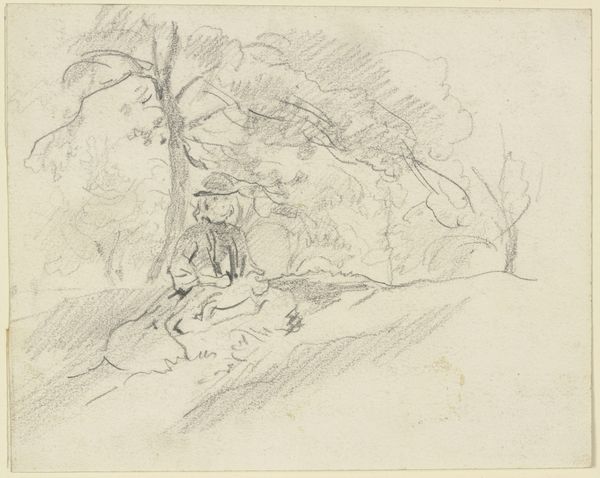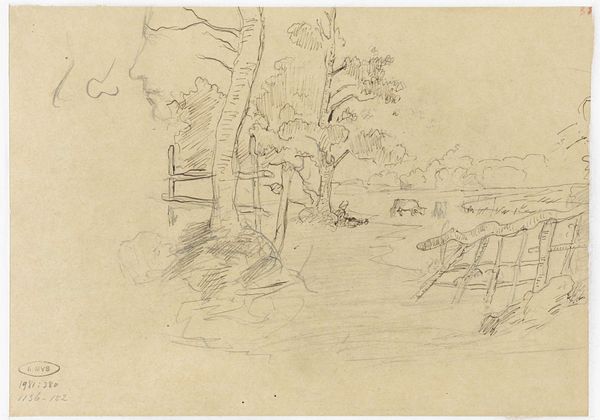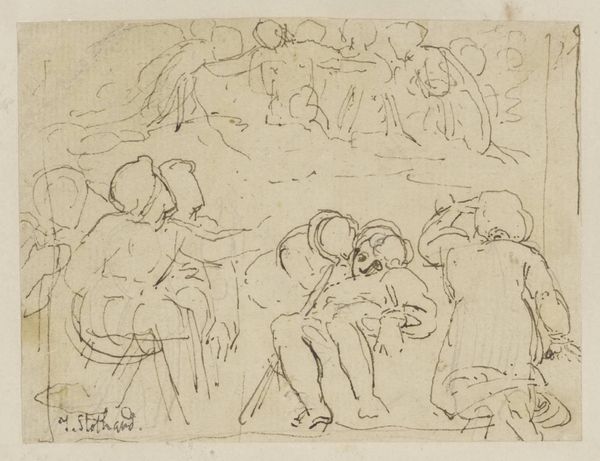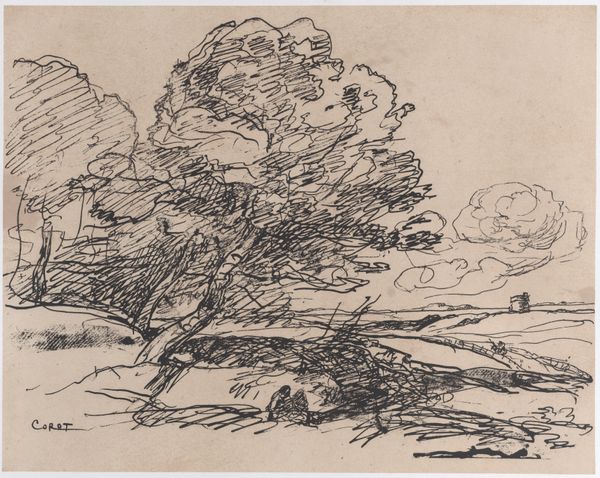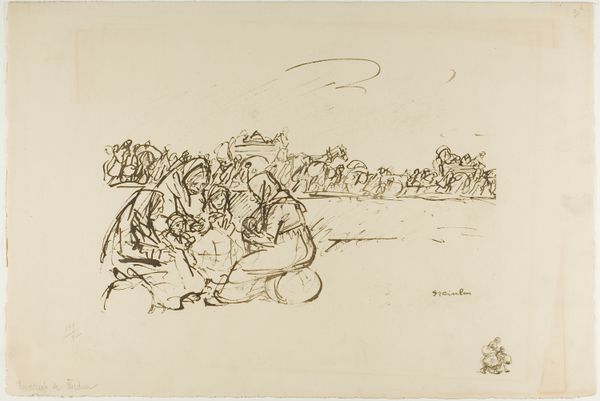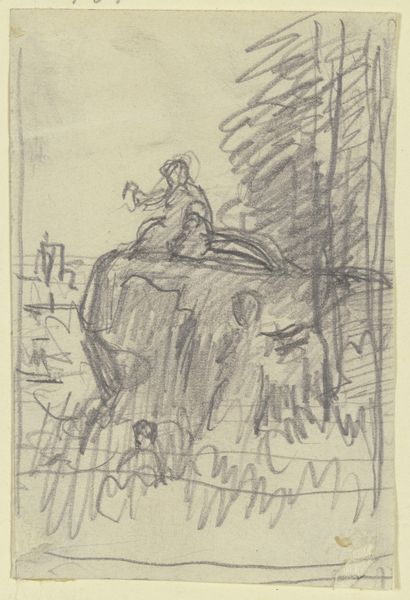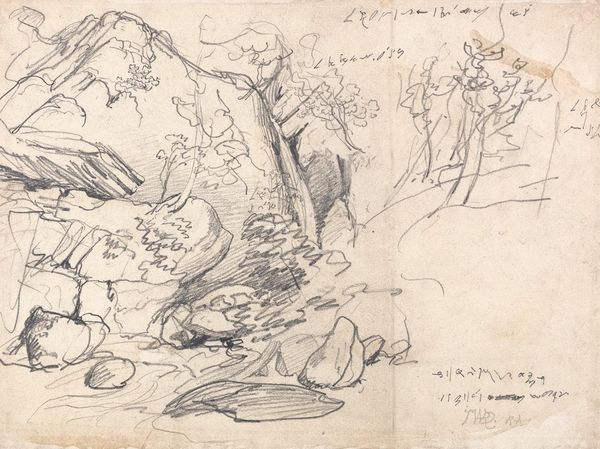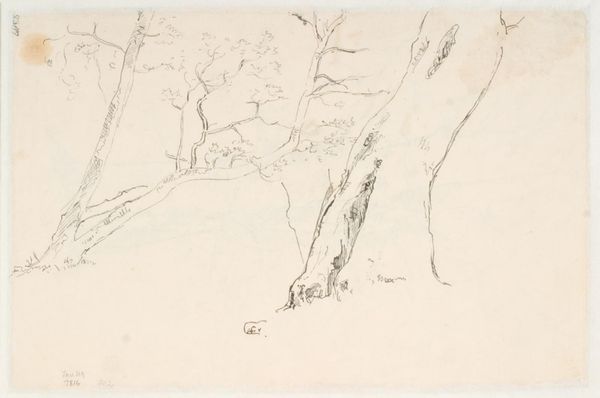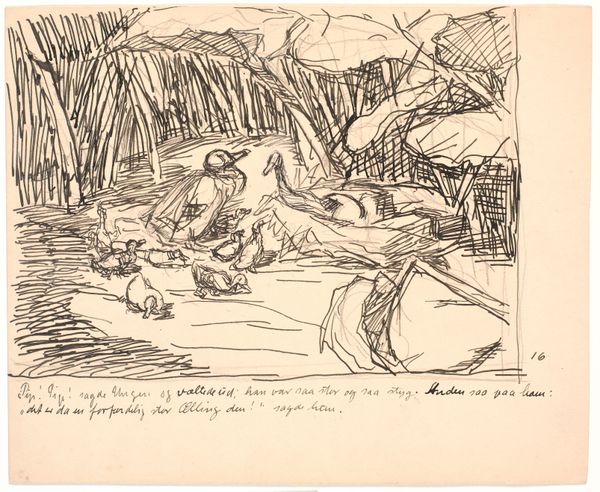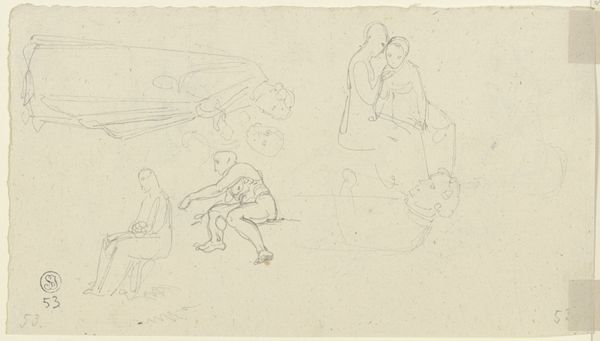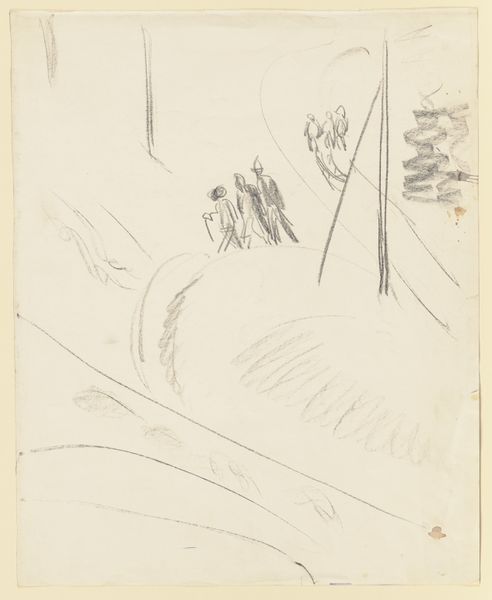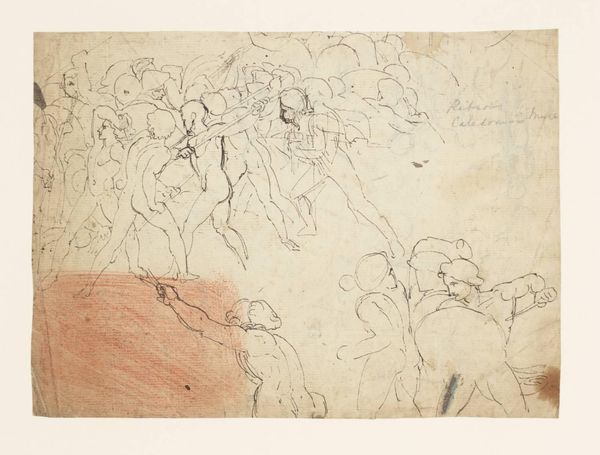
drawing, paper, pencil
#
drawing
#
16_19th-century
#
landscape
#
figuration
#
paper
#
pencil
#
genre-painting
Copyright: Public Domain
Editor: So, this is "Group resting in the open," a pencil drawing on paper by Philipp Rumpf from the 19th century. It feels very informal, like a snapshot of everyday life, but what stands out to me is that it seems almost unfinished. What's your read on it? Curator: Indeed. The informality you mention speaks to the changing role of art in the 19th century. Genre painting like this started to celebrate scenes of ordinary people, moving away from grand historical or mythological narratives favored by earlier institutions and patrons. Who gets represented, and how, becomes a political question. Editor: So, you’re saying its very subject challenges established conventions? How so? Curator: Precisely. This seemingly simple scene, its display in institutions like the Städel, signals a shift. Think about the power dynamics inherent in representing "the people." Does it romanticize leisure, or offer a realistic depiction of their lives? Consider who had the power to represent whom, and in what context this image was created and circulated. Editor: It's interesting you bring up power, since there’s an ambiguous air about them. Did images like this, of common folk, gain more respect with a broader public over time, thus finding a place in museums? Curator: Absolutely. As the middle class grew in influence and museums became more accessible, art began to reflect their interests and values. Genre scenes depicting everyday life gained popularity. The institutional embrace of these images reflects, and perhaps reinforces, a democratization of art and taste. But remember, the "common folk" often remain the subjects, not the arbiters, of this taste. Editor: That’s a fascinating point. I guess I was seeing it through a modern lens, valuing its intimacy, without considering the broader socio-political context that shaped both its creation and reception. Thanks, that gives me a lot to think about! Curator: Likewise, these seemingly simple sketches hold more than initially meets the eye! Considering its historical trajectory makes all the difference.
Comments
No comments
Be the first to comment and join the conversation on the ultimate creative platform.
